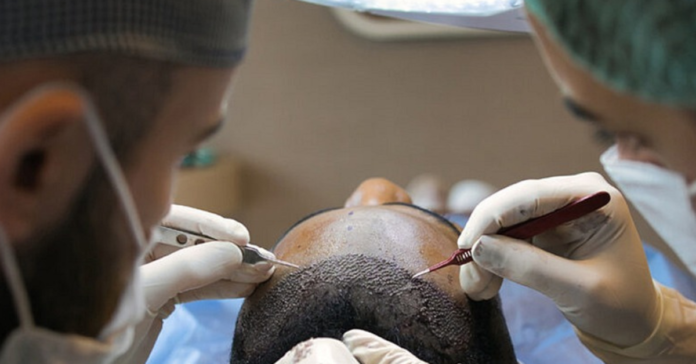Hair loss is a common issue affecting millions of people worldwide, with causes ranging from genetics to environmental factors. For those seeking a permanent solution to restore their natural hairline and regain confidence, hair transplant procedures offer a reliable option. These treatments are performed by specialized doctors using advanced surgical techniques tailored to each patient’s specific hair restoration needs. Among the most trusted and effective procedures today are Follicular Unit Transplantation (FUT), Follicular Unit Extraction (FUE), and Direct Hair Implantation (DHI). Each method has unique benefits and procedures, which we will explore in detail throughout this article. For individuals considering Hair Transplant in Dubai, understanding these techniques can help in making informed treatment choices under the guidance of expert doctors.
Understanding Hair Transplant Surgery
A hair transplant is a minimally invasive surgical technique wherein hair follicles are moved from a donor site (typically the back or sides of the scalp) to a bald or thinning area. This procedure is executed by trained doctors in sterile clinical settings, ensuring the highest standards of safety and efficacy. The aim is to replicate the natural hair growth pattern for seamless results.
Hair transplant techniques have evolved significantly, offering patients more refined, scar-minimizing options with enhanced accuracy and aesthetic appeal.

Follicular Unit Transplantation (FUT)
FUT, often referred to as the “strip method,” involves removing a narrow strip of scalp from the donor region. The strip is then dissected under a microscope to extract individual follicular units, which are then implanted into the recipient areas.
Doctor’s Approach in FUT
Doctors begin the process by administering local anesthesia and carefully excising a strip of scalp tissue. Highly trained technicians under the supervision of the doctor separate the follicular units, preserving their integrity. The surgeon then creates tiny incisions at the recipient site, placing each graft with precision to ensure natural hair direction and density.
Ideal Candidate
FUT is typically recommended for patients who require a larger number of grafts and have sufficient scalp laxity. It is suitable for individuals looking to achieve maximum coverage in a single session.
Follicular Unit Extraction (FUE)
FUE is a modern, minimally invasive hair transplant technique that involves harvesting individual hair follicles directly from the donor area using a micro punch tool.
Doctor’s Technique in FUE
The procedure begins with the shaving of the donor area, followed by local anesthesia. The doctor uses a punch device (typically between 0.7 mm to 1.0 mm in diameter) to extract follicular units one at a time. Each extracted graft is carefully examined and then implanted into tiny recipient sites, aligning with the patient’s natural hair pattern.
Why Doctors Prefer FUE for Certain Patients
This method leaves no linear scar, making it ideal for those who prefer shorter hairstyles. Doctors often recommend FUE for patients requiring fewer grafts or those who have tight scalp skin unsuitable for FUT.
Direct Hair Implantation (DHI)
DHI is an advanced technique derived from FUE but utilizes a specialized tool called the Choi Implanter Pen for direct implantation.
Doctor’s Procedure in DHI
In this technique, doctors first extract the follicles using the FUE method. However, instead of creating separate incisions, they load each graft into the implanter pen and implant it directly into the scalp. This allows the doctor to control the depth, direction, and angle of each implanted hair with high precision.
Doctor’s Preference for Precision and Density
DHI is preferred by doctors when the goal is to achieve maximum density and a refined hairline design. The technique is often used for delicate areas such as eyebrows, beard, and frontal hairlines due to its meticulous approach.
Robotic-Assisted Hair Transplantation
Technological advancements have introduced robotic systems that assist doctors in the extraction and placement of hair follicles.
Doctor-Guided Robotic Assistance
Doctors oversee and control the robotic arm, which enhances speed and accuracy in graft harvesting. The robotic system is designed to identify the best follicles for extraction, minimizing trauma and improving graft survival rates.
When Doctors Choose Robotic Systems
Doctors may recommend robotic-assisted procedures for patients who seek a highly accurate, tech-integrated approach with minimal handling of grafts.
Benefits of Hair Transplant Treatments
Hair transplant treatments offer numerous advantages when performed by skilled doctors:
- Natural Results: Surgeons meticulously place each follicle to mirror the natural hairline and growth direction, creating seamless results.
- Permanent Solution: Transplanted hair follicles are typically resistant to the hormone responsible for baldness (DHT), ensuring long-lasting outcomes.
- Customized Treatment: Doctors tailor each procedure to suit the patient’s hair type, density, and aesthetic goals.
- Minimally Invasive: Modern techniques such as FUE and DHI require no stitches and involve minimal recovery time.
- Boost in Confidence: A fuller, natural hairline significantly enhances self-image and confidence.
Doctor’s Consultation and Evaluation
Before proceeding with any hair transplant method, a comprehensive consultation is essential. Doctors evaluate various factors including:
- Scalp condition and hair density
- Donor hair availability
- Age and extent of hair loss
- Patient expectations and desired results
Using diagnostic tools like digital scalp imaging, doctors devise a detailed treatment plan, ensuring optimal graft placement and long-term success.
Hairline Design and Density Planning
A key aspect of successful hair transplant surgery is the design of a natural-looking hairline. Experienced doctors blend medical precision with aesthetic judgment to map out the ideal hairline.
- Hairline Position: Determined based on facial proportions, age, and natural recession patterns.
- Angle and Direction: Doctors replicate the natural angle and orientation of hair to ensure undetectable results.
- Density Distribution: Depending on the patient’s needs, the density is adjusted to balance aesthetics and graft availability.
Post-Procedure Follow-up by Doctors
Even after the transplant, ongoing follow-up is essential. Doctors schedule multiple check-ups to:
- Monitor hair growth progress
- Assess graft survival and scalp health
- Provide guidance on hair care routines
- Ensure patients are satisfied with their results
This personalized care underlines the importance of choosing experienced and qualified medical professionals for hair restoration.
Long-Term Outlook of Hair Transplant Treatments
When performed by skilled doctors using the right technique, hair transplant results are highly successful and natural-looking. The transplanted hair follows a natural growth cycle—initial shedding followed by regrowth within 3-6 months. Full results are typically visible within 12 months.
Doctors also guide patients in maintaining overall scalp health to support native and transplanted hair longevity.
Conclusion
Hair transplant procedures have revolutionized the way doctors address hair loss, offering patients permanent, natural-looking solutions tailored to their unique conditions. From the classic FUT method to the precision-based DHI technique, each approach serves specific purposes depending on the patient’s needs. Through thorough diagnosis, customized treatment planning, and meticulous surgical execution, doctors ensure high success rates and patient satisfaction.































